
Tim Kingsbury aka Patrick Welsh
Hello, true crime friends! We are going to rewind the clock back to the dawn of this bizarre saga … way back to the early 1980s. Today’s story is about Patrick Hennessy Welsh from Ohio who was the ultimate deadbeat parent. He ran away from his wife and family, stole from his employer, defrauded the Social Security Administration, didn’t pay child support, and scammed an insurance company.
The crazy thing is that all he had to do was go to Galveston, use a different name, and he became a community leader that everyone called, “the amazing Tim Kingsbury.”
As always, we must begin our vintage Texas crime story with the dusting of nostalgia from the period … let’s remember the 1980s in Texas. I always wonder if my characters heard the same music we heard during the period of the story, if they saw the same movies, and wore the same clothing styles as we did.
The 1970s left us all looking for a disco ball and writhing with Saturday Night Fever, but no sooner than John Travolta’s shiny black dancing shoes cooled off, he pulled on a pair of cowboy boots and Wranglers. Thus, the 1980s began with the cutest little trailer park love story (a true one by the way) about Sissy & Bud played by Debra Winger and John Travolta in the 1980 box office hit Urban Cowboy.
The soundtrack from Urban Cowboy, blessed us with iconic country western music ingrained in our hearts and souls to this day. Hopefully, all of those lonely hearts who were “Looking for Love” in all the wrong places found what they were looking for while all those blue jeans and boots lined up in the closet were pushed into a dark corner for not-so-flattering parachute pants and jellies (shoes).
In the clubs, dancers went from putting a stop to “Lyin’ Eyes” to declaring from the dancefloor how they’d be watching (stalking?) someone significant with “Every Breath You Take.” And if it wasn’t that, the dance mob shook and shimmied and announced that “Billie Jean” was not their lover, she’s just a girl who was talking smack.
And now on to our story which kicks off on January 10, 1980.
1 – A Young Father Goes Missing in Ohio
For the moment, we are in Ohio watching as Patrick Hennessy Welsh, the son of a prominent radiologist, a young man seemingly on the cusp of a promising future, stands in court and pleads guilty of a significant act of theft. The charge? Stealing a hefty sum of $23,265 from none other than Ohio State University, his employer.
How Patrick Welsh managed to steal those funds and how he got caught went like this, according to an article, “Ex-official admits theft in office,” which appeared in The Delaware Gazette, on August 8, 1980.
“In early July, an auditor at the university noted that several checks drawn on the fund had double endorsements, the signature of a university faculty member and the signature of Welsh.
The auditor notified University police, and Deputy Police Chief John Kleberg conducted an investigation of the 13 checks with double endorsements.
The fund receives and disburses money that comes in as private gifts to the university. Kleberg determined Welsh had created fictitious grants and forged the names of the faculty members to the requests, which were approved by the fund’s steering committee.
He [the auditor] contacted the professors to whom the checks were made out, and they denied signing them or requesting money from the development fund.”
The amount stolen, $23,265 had the buying power in 1980 that $100,000 does today in 2025.
The consequences were swift and tangible: a sentence of three years’ probation, a 30-day stint in jail, and the obligation to pay back every single penny he’d pilfered. This wasn’t a slap on the wrist; this was mark on his record, a scarlet letter in his hometown of Lancaster, Ohio.
Now, fast forward three years to January 20, 1983. It was on that cold winter day that Patrick Welsh vanished from his Lancaster home, leaving behind his wife, Elizabeth, whose nickname was “Peachy.” He also left behind their two young sons, Theodore (10) and Christopher (6).

Elizabeth (ca.1980s)
Can you imagine the turmoil and unanswered questions?
But it gets darker.
Elizabeth Welsh received two letters from her missing husband, letters she understandably interpreted as suicide notes. One was postmarked “Lancaster” on the very day he disappeared, and the second letter surfaced three weeks later from San Francisco.
In these letters, Welsh spoke of doing “the best thing” for his family and “watching over them from heaven.” He painted a grim picture of an internal “devil” that he feared would corrupt everyone around him, a corruption he couldn’t inflict on those he loved.
But here’s where the first cracks in the facade of a tragic suicide begin to appear. As investigators would later uncover, there were clues that pointed towards a calculated departure. For instance, in the garage, they found remnants from a “laminate-your-own ID card” kit.
WHAT?
That’s ridiculous! What would a man contemplating suicide need with a fake ID?
Welsh had sold his car recently and taken a significant portion of the proceeds with him. Common sense tells you that a dead man has no need for cash. So, while his family grappled with the devastating possibility of his death, the seeds of a potential escape were already sown. The suicide letters were a deliberate misdirection, a way to sever ties and allow him to vanish without a trace, leaving behind a narrative of tragedy rather than shame and flight.
Let’s think about the gut-wrenching emotional fallout of what Elizabeth Welsh believed to be her husband’s suicide. Imagine receiving those letters. Imagine having to tell your ten-year-old and six-year-old that Dad would not be back.
For Elizabeth, these letters would have been a one-two punch of devastation. First, the agonizing uncertainty of his disappearance, the frantic searching of icy roads for any sign of an accident. Then, the cold, hard finality of those words confirmed her worst fears. The emotional toll would have been immense.
The self-doubt is awful. Did she miss the signs? Could she have done something differently? The source mentions she carried “fifteen years of guilt for not preventing his suicide.” That’s a heavy burden to bear while trying to navigate life without the person you built it with.
And it wasn’t just the emotional devastation, folks. Let’s talk about the practical nightmare Elizabeth was suddenly facing. My sources reveal a stark picture of her new reality: a $400-a-month job, a $550-a-month mortgage, and two young children to raise alone. Suddenly, the financial rug had been yanked out from under her. The excerpt from her undated diary in the spring of 1983 paints a bleak picture: “I can’t understand that we can’t have any pets in our apartment. I can’t afford pets, at any rate. We will be lucky to stay in peanut butter. I am finding out that Pat left us in much worse shape than I had originally thought.” This isn’t just about material hardship; it’s about the constant worry, the sacrifices, the sheer struggle to provide for her children while grappling with unimaginable loss.

Patrick Welsh and his sons
Then there are the boys, Theodore and Christopher. It broke their hearts when they learned their father’s disappearance and their mother’s financial ruin meant they had to rehome their dog who had been with them since before the younger boy was born.
Regardless of the circumstances of his leaving, the absence of a parent, especially through what they believed to be suicide, leaves deep scars.
2 – Elizabeth Declares Patrick Dead in 1988.
We need to fast forward to 1988 in order to set the stage for the story and explain why things unraveled as they did.
In early 1983, Elizabeth presumed her husband had killed himself. In July 1988, five years after his disappearance, an Ohio probate court declared Welsh legally dead at Elizabeth’s request. She needed to qualify for his life insurance and social security death benefits.
This official declaration would have brought a different kind of closure, a sense of finality to their grief, making the eventual revelation of his continued existence even more shocking and devastating.
Even small acts take on a sinister light in retrospect. Our sources mention that Pat “cleaned out his ten-year-old son’s piggy bank before he disappeared.” This detail, in the context of a supposed suicide, is baffling and frankly, chilling. It hints at a level of premeditation and self-preservation that starkly contradicts the image of a man driven to take his own life.
3 – Meanwhile, Down in Galveston…
A nice-looking young man arrives in Galveston on a Greyhound Bus who seemed to have only a few dollars to his name. But a person doesn’t need much money when he has pocketsful of charm and charisma, as did this particular newcomer.
Galveston … why there? Did he know that the town built upon an island was perfectly poised to receive a man looking to change his identity? Did he plan to go to Galveston all along? He said after he was found out, “I rode the bus until I ran out of money.”
But was that the truth? I think he did his research and knew that Galveston needed help advancing their rejuvenation agenda. But we’ll never really iknow.
For Patrick Welsh, son of a prominent radiologist in Lancaster, Ohio, who had stumbled and fallen from grace with an embezzlement conviction at Ohio State University, he was indeed at the end of his old life. He was searching for a new life and a new identity, and to bury the shame of a conviction. The weight of that public downfall must have been crushing, the small-town scrutiny relentless. Galveston, then, offered the allure of anonymity, a place where the past might just fade into the salty sea air if he rolled up his sleeves and worked hard enough.
The moment Patrick Hennessy Welsh stepped off the bus, he slithered out of his old skin and began an audacious transformation into Tim Kingsbury. Picture this scene from 1983: the salty air of Galveston, the cries of gulls overhead, and a man from Ohio on a bus riding a bus over the Galveston Causeway with a secret as heavy as a Gulf Coast storm cloud brewing inside him.
Now, we can’t pinpoint the exact day he stepped off the bus, but it was probably the first week in February. But we know it was a time of rebirth for Galveston itself. The Strand was buzzing, old Victorians were getting facelifts, and a quirky little tabloid called InBetween was capturing the local flavor. This atmosphere of renewal and a certain tolerance for the unconventional would prove to be fertile ground for Patrick’s elaborate deception.
Stepping onto Galveston soil, Patrick, the disgraced son and embezzler from Ohio, was now a man with a mission: to disappear and become someone else entirely. He didn’t have money and lived on charity when he first got there.
Patrick wasn’t a loner by nature, but in those initial days, a degree of solitude was likely his shield. He needed to observe, to learn the rhythms of this new place, and lay the foundation for his invented persona.
He was a man on the run, living under a false name, and by showing only his best side, he began to weave himself into the fabric of a community. He was in the right place at the right time.
Tim Kingsbury is said to have taken a little charity in the beginning, but he never just took the charity. He would install himself into the operation by helping, working, and volunteering.
Galveston, in 1983, wasn’t just any backwater; it was a town undergoing a “long-awaited renaissance.” Battered by storms and fate throughout much of the 20th century, it was experiencing a revival. The Strand historic district was thriving, Houstonians were pouring in, sprucing up old Victorian homes. There was a buzz, a sense of possibility in the air. This meant that a newcomer wouldn’t stick out like a sore thumb, not the way they might have just a few years prior. Patrick Welsh, hoping to become Tim Kingsbury, could blend into this backdrop of renewal.
The local flavor of Galveston also played a significant role. The source introduces us to the IBCs, Islanders by Choice, the folks who, like Welsh, had deliberately chosen Galveston as their home. They contrasted themselves with the BOIs, Born on the Island, who held a certain inherent status. But here’s the crucial bit: Galveston’s heart, we learn later, “can’t be bought with money, but she is a sucker for someone who appreciates her charms and offers to serve her.” This suggests that while being a BOI had its perks, a newcomer willing to immerse themselves in the community, to contribute, could indeed find acceptance. The sources offer some clues, though deep friendships in that very first month were probably still a distant goal. His immediate priorities would have been practical: finding shelter and a means to support himself. We know he secured an unfurnished room in the older part of town—a quiet, unassuming space to plan his next moves. And crucially, he found a job working in a sandwich shop.
Think about that sandwich shop for a moment. These mundane places can be unexpected crossroads. Serving locals, even in a brief interaction over a ham and cheese, provides an opportunity for subtle observation. He’d be hearing snippets of conversations, getting a feel for the local dialect, the concerns, the personalities of the Galvestonians. It’s a silent form of reconnaissance, absorbing the atmosphere of his new hunting ground. While these wouldn’t be deep, meaningful connections, they were his first tentative steps into the social landscape.
Interestingly, a source reveals later that Patrick didn’t arrive penniless; a bank teller recalled him having a substantial account in the fall of 1983. This suggests he had some financial stability from the outset, which would have eased the immediate pressure and allowed him more time to strategize his integration into the community rather than solely focusing on survival.
Now, while deep friendships might not have blossomed immediately, the seeds of his future connections were being sown in more subtle ways. He wrote at least ten articles for InBetween, often featuring himself in various novice adventures like hiking, marathon training (despite lack of experience), sailing, and scuba diving.
These pieces, with catchy headlines like “Tim Takes a Hike,” suggest a man trying to create a local identity, to become a known entity, even if in a somewhat superficial, self-promotional way. This wasn’t the carefully cultivated “amazing Tim Kingsbury” of later years, but rather a more raw, perhaps slightly desperate, attempt to be seen and acknowledged. These early writings, while not indicative of profound friendships, would have introduced the name “Tim” and a certain adventurous persona to a segment of Galveston’s residents. He was becoming a “town character.”
However, the source also pointedly states that the author could not find a single BOI (Born on the Island) who knew him during those first months. This highlights that his initial interactions were likely with other newcomers, the IBCs (Islanders by Choice), or perhaps those on the periphery of Galveston’s established social circles. Building trust and genuine friendships with the long-time residents, the gatekeepers of Galveston society, would take time and a strategic approach.
So, in that hazy spring of 1983, Tim Kingsbury’s arrival in Galveston was less about immediate camaraderie and more about calculated immersion. He was a chameleon testing the waters, using his sandwich shop job for observation, perhaps his early writings for tentative visibility, all while carefully concealing the baggage of Patrick Welsh. The deep, meaningful connections that would define his Tim Kingsbury years were still on the horizon, waiting for the right opportunity, the right role, to take root and flourish in the unique and accepting soil of Galveston. It was a slow burn, folks, the initial embers of a carefully constructed new life.
4 – Keep Your Employees Gruntled (A disgruntled employee may go hard on the boss.)
This is where it gets good. When the carefully constructed facade of Tim Kingsbury began to crack, the first ominous notes in what would become a full-blown symphony of his undoing. Now, you could argue that Patrick Welsh’s troubles really started back in Ohio with that embezzlement from Ohio State. That was the pebble that started the avalanche. But here in Galveston, fifteen years later, the past he’d so diligently buried was about to claw its way back to the surface.
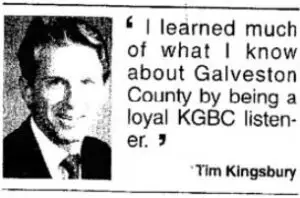
Kingsbury became the GM for KGBC.
Let’s set the scene: it’s 1996. Tim Kingsbury has become an integral part of Galveston. The “amazing Tim Kingsbury,” as the Daily News columnist invariably called him, is a pillar of the community. President of the Galveston Historical Foundation, a go-to guy for every good cause, a friend to the town’s leading citizens. He’s living the dream, the ultimate do-over. But beneath that polished exterior, the ghost of Patrick Welsh still lurked and someone was about to yank that ghost into the harsh island sunlight.
We learned that an unnamed disgruntled employee at KGBC, the local radio station where Tim was the general manager had an ax to grind. One fateful day in 1996, this individual decided to take matters into their own hands and ransacked Tim Kingsbury’s desk.
Imagine the scene: drawers pulled open, papers scattered, a desperate hunt for … well, we don’t know what they were initially looking for. But they hit the jackpot, folks. Tucked away, perhaps carelessly, perhaps out of some strange attachment to the past, was an envelope. Inside? Forged Wisconsin birth certificates, blank social security cards, and a piece of linoleum carved into the seal for Dane County, Wisconsin. The tools of a phantom, the building blocks of a false identity.
This discovery sent shockwaves through the small world of Galveston’s inner circle … but only that inner part of the circle. Naturally, the district attorney was notified. The radio station, KGBC, the very place Tim Kingsbury held a position of respect and those damning fake documents were confiscated. The man Galveston knew as Tim, the upstanding citizen, was now under suspicion. The mask had slipped.
Patrick Welsh didn’t completely sever the ties to his past. On that phony birth certificate, he used his mother’s real maiden name. And the county official who supposedly signed the document? “Richard A. Welsh,” his father’s name, written in his father’s exact signature … a breadcrumb trail left unintentionally.
Now, what happened next is where the Galveston way of doing things comes into play. Tim Kingsbury had committed a felony—forging official documents. In most places, this would lead to a very public arrest, and the full weight of the law coming down. But in the Galveston of 1996, things were done as the handlers saw fit. There was no normal booking process, no fingerprinting, no photographs taken. And remarkably, this major incident wasn’t even reported in the Daily News, the local paper that had so often lauded the “amazing Tim Kingsbury.” The town, or at least certain powerful figures within it, seemed intent on keeping this under wraps.
An Ohio lawyer, alerted to the situation, stepped in. Remember that chunk of money that Patrick Welsh embezzled from Ohio State? Turns out, there was still a $10,000 balance owed. This lawyer arranged for that debt to be paid in full for all charges against Patrick Welsh in Ohio being dismissed. Let that sink in! A dead man was making restitution and getting charges dropped. He was dead because Elizabeth had secured a declaration of death. The right hand in Ohio did not know what the left hand in Galveston was doing.
Back in Galveston, Tim Kingsbury, or rather Patrick Welsh, was allowed to plead guilty to the forgery charge, pay a fine, receive probation, and, incredibly, continue his life as Tim Kingsbury in public. There was one caveat, though: he was required to use his real name on all government and financial records. It’s a bizarre twist … the town publicly still had its beloved Tim Kingsbury, but behind the scenes, a different name was on the paperwork.
Our source notes that on the very day his desk was ransacked, Tim did what he had done in Lancaster when the embezzlement was discovered — he called a “family meeting” with Jane D. (name withheld), his life partner, and Jane’s brother, to reveal the truth. So, those closest to him in Galveston were now in on the secret. And for over a year, the secret held. Galveston continued to embrace Tim Kingsbury, unaware of the precarious legal tightrope he was walking.
But the universe, or perhaps a determined woman in Ohio, had other plans. The full storm, the one that would finally tear down his carefully constructed world, was still brewing, far away in Ohio, in the persistent questions and growing suspicions of a woman who refused to let her past be erased.
The discovery of those forged documents in that ransacked desk was a crucial turning point, The secret was out, just not to everyone, not yet. And in the world of true crime, folks, a secret shared is a secret waiting to explode.
5 – Elizabeth might be “Peachy,” but she could be tough!
At the point, one victim in this twisted tale, Elizabeth Welsh, found herself backed into a corner, legally speaking, and decided to turn detective. Her journey, driven by necessity and a mother’s fierce protectiveness, is a crucial part of how the carefully constructed life of Tim Kingsbury began to unravel.

Elizabeth Welsh
Elizabeth had rebuilt her life in Ohio, becoming the president of the Newark–Licking County Chamber of Commerce—a testament to her resilience. She had moved on, or so she thought. But the past has a way of resurfacing, doesn’t it? The legal problem that thrust her back into the mystery of Patrick Welsh arrived in the form of a rather bureaucratic, and potentially life-altering, document: a form letter from the Social Security Administration (SSA).

Envelope with Letter from the SSA
This wasn’t a friendly update, folks. This was a demand. The SSA was requesting repayment of a staggering $54,000 in benefits that Elizabeth had received for her children over the years. The reason stated on the letter was stark and unsettling: “Number holder not deceased.”
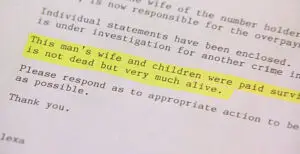
Letter from the SSA
Imagine the shock, the disbelief that must have washed over her. After all this time, the legal foundation upon which she had rebuilt her life was crumbling. The very agency that had provided support after her husband’s supposed death was now accusing her of receiving fraudulent payments because, according to them, he wasn’t actually dead. This wasn’t just a financial threat; it was a potential legal nightmare, casting a shadow of suspicion over her.
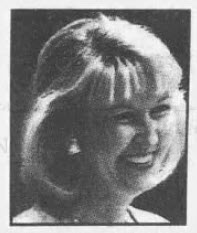
Elizabeth Welsh
Initially, Elizabeth didn’t suspect Pat. Her first thought, understandably, was that someone was trying to use Patrick’s old social security number as a false ID. Her priority became clearing her name and protecting her family from these accusations and the massive financial burden the SSA was demanding. She needed to find out who was using his number to prove that she was not the one acting fraudulently.
However, when she tried to get more information from SSA officials in Newark, she hit a brick wall. They cited the Privacy Act of 1974, a law meant to protect individuals’ information, which in this cruel twist of fate seemed to shield the person responsible for her predicament while leaving her vulnerable. Even the intervention of her congressman, John Kasich, who was the House Budget Committee chairman, couldn’t initially break through the SSA’s stonewalling. The bureaucracy was impenetrable.
But Kasich’s office managed to pry loose two crucial pieces of information. They learned that the social security cardholder was located in the Southwest, with Texas being a strong possibility, and that he had been involved in some sort of criminal activity. Then came the bombshell, delivered with a cautionary “Are you sitting down?” by Kasich’s senior aide: “I think this might be Pat.” The possibility, the almost unbelievable reality, that Patrick was alive and somehow the cause of this legal and financial crisis for her began to take shape.
Now, how did Elizabeth, sitting in Ohio, track down a man who had vanished without a trace fifteen years prior and was now living under a different name in a different state? The source reveals a crucial turning point: a suggestion from a friend. In the age before ubiquitous social media and easy online people searches, this friend suggested looking at a driver’s license database on the internet.
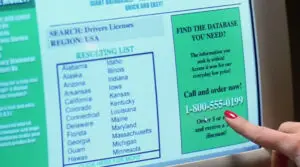
Armed with the knowledge that Patrick was likely in Texas, Elizabeth typed “driver’s license information” into her computer. Sure enough, she found a company that offered access to Texas driver’s license records for a fee. So she paid and got the information she needed; also, at the bottom of the webpage, she found a phone number and made the call.
“My heart was beating so hard, I could see my blouse move,” she recounted. She told the person who answered that she only wanted one name. The person on the other end, sensing her urgency, asked for Patrick’s social security number. It took mere seconds. The response? “Patrick H. Welsh,” followed by his physical description: “Five feet, nine inches; one hundred fifty pounds; green eyes; brown hair; must wear glasses to drive; lives at [withheld] Driftwood Lane; Galveston, Texas.” After all those years of uncertainty, the truth, in its stark and undeniable detail, was finally revealed. Patrick was alive, and he was in Galveston.

Patrick’s Home in Galveston
A quick backward search of the Galveston address provided the names of Tim Kingsbury and Jane D.
She found his e-mail address and sent a simple yet loaded message: “I know. Call me to discuss this. Peachy.” That childhood nickname, a ghost from their shared past, was her way of cutting through the carefully constructed persona of Tim Kingsbury to reach the man she once knew.
And while Tim Kingsbury initially didn’t respond to the email, Elizabeth’s persistence paid off with a phone call to KGBC. His eventual admission, “I knew this day would come. I just didn’t think it would be you who would find me,” confirmed the incredible truth. Elizabeth’s legal woes in Ohio, the demand for the repayment of those Social Security benefits, served as the catalyst that propelled her across state lines and through the layers of deception to finally unmask the man who had abandoned his family and built a new life on a foundation of lies. It was a relentless pursuit driven by necessity, a mother’s responsibility, and the undeniable weight of a past that refused to stay buried.
Elizabeth Welsh said she used the Internet to search for news articles about him and finally found Tim Kingsbury. She says she decided to press charges of nonsupport and abandonment when she learned the Pat Welsh sat on the board of a women’s crisis center.
“That was my line in the sand,” she says, “because he had abandoned his own children.”
Elizabeth was angry that her boys had to navigate their childhood, their milestones, and their questions about life, without their dad. Imagine the confusion, the sadness, the potential anger and resentment that could fester. One of their sons, years later, upon learning the truth, said, “He didn’t kill himself. He killed all of us.”
That single sentence speaks volumes about the damage his disappearance, even under the false guise of suicide, inflicted on his children. They didn’t just lose a father; they felt betrayed, abandoned in a way that perhaps even death might not have caused.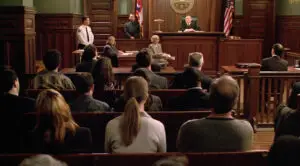
Thanks to Elizabeth, Patrick was extradited back to Ohio, and on February 5, 1997, he was arraigned. By April 27, 1997, Welsh pleaded no contest to the eleven charges against him. A Licking County, Ohio, judge then set his sentencing for May 21, pending the results of a pre-sentencing investigation.
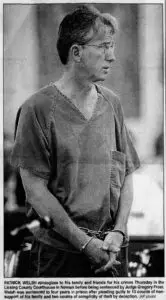
Patrick in Court, 1998
Adding another layer to this legal web, the Galveston County District Attorney’s office filed a motion on May 11, 1997, to revoke Welsh’s probation from the December 1996 forgery conviction. It seems the chickens were truly coming home to roost for Patrick Welsh.
He was ultimately released from prison in May 1998 after serving just a year behind bars, which would be infuriating to most women. And Elizabeth Welsh is the winner here. She lived her life well and with character. She pulled herself up by her bootstraps, mothered her children, and became the president of the local chamber of commerce. Elizabeth wasn’t even bitter. She had constructed a wonderful life for herself and the boys. And, by then, they were grown men becoming successful in their own lives.
Patrick Welsh was placed back on probation and, as of 2001, he was calling himself “Tim Kingsbury” and living with his girlfriend back in Galveston. He worked at a public relations firm and remained very much in debt.
One more update in 2025: There’s a “Pat Welsh” on Facebook who has worked or volunteered for Moody Mansion. There’s no picture, so it is hard to tell if it is the same fellow.
Hope you enjoyed this one. Comments? Questions?
Extra – TIMELINE: Patrick Welsh 1980 – 1998
I love a good timeline to go with a true crime story. The following is for the reader’s clarification.
Most of the following appeared in the Galveston Daily News on May 17, 1998, with a small update at the end.
- January 10, 1980: Patrick Welsh pleads guilty to theft for stealing $23,265 from Ohio State University. HE is sentenced to three years’ probation, 30 days in jail and must pay back the money he stole.
- January 20, 1983: Patrick Welsh disappears from his Lancaster, Ohio, home, leaving behind his wife, Elizabeth, and two sons: Theodore and Christopher. Elizabeth Welsh receives two letters she interprets as suicide notes.
- Early 1983: Tim Kingsbury arrives by bus in Galveston.
- July 28. 1988: An Ohio probate court declares Welsh dead, on the request of Elizabeth Welsh.
- February 23. 1996: Tim Kingsbury’s office at KGBCAM radio on Pelican Island is scorched the day after an employee there approached the district attorney’s office. The employee said he’d spotted in Kingsbury’s desk completed and blank forms for birth certificates, death certificates, and Social Security cards. The documents that were completed had the name “Timothy Michael Kingsbury” on them. On the same day, the district attorney’s office contacts the U S Department of Health and Human Services, which oversees the Social Security Administration.
- February 26, 1996: The district attorney’s office notifies the U.S. Department of Health and Human Services of what it found during the search.
- March 14. 1996: Kingsbury admits his true identity to Galveston County District Attorney Mike Guarino and tells him he is on the run from Ohio.
- March 15, 1996: The district attorney’s office contacts the Franklin County. Ohio, probation department. That office says Welsh had been on probation, but that his probation was ended when he repaid the money he had stolen from Ohio State.
- March 26.1996: The district attorney’s office turns the findings of its investigation over to the FBI office in Gaveston.
- April 15.1996: Findings are also turned over to the Internal Revenue Service, but federal officials said the U.S. attorney in Houston wouldn’t prosecute.
- October 1996: Unaware of all the problems in Galveston happening to Tim Kingsbury, Elizabeth Welsh receives a letter from the Social Security Administration saying her ex-husband, Patrick, is alive. She begins to track him down using the internet. She soon locates his email and contacts him. Elizabeth also has her congressman, John Casich, assist. That’s when she finds out it is true.
- December 19,1996: Tim Kingsbury pleads guilty to third-degree felony forgery. He is convicted under his real name, Patrick H. Welsh. As part of his probation, Kingsbury must notify the Social Security office of his true identity.
- January 30, 1997: Galveston County sheriff’s deputies arrest Kingsbury on ten counts of felony non- support abandonment and two counts of complicity to theft.
- February 5, 1997: Kingsbury is arraigned in Ohio.
- April 27, 1997: Welsh pleads no contest to the 11 counts against him. A Licking County, Ohio, judge sets sentencing for May 21, pending the results of a pre-sentencing investigation.
- May 11, 1997: Galveston County District Attorney’s office files motion in 122nd District Court to revoke Welsh’s probation from the December 1996 conviction.
UPDATE. From “Dad’s Double Life,” by CBSNews.com staff published August 27, 2001 (Link: crimesy.com/TimKU)
- May 1998: Patrick Welsh was released from prison after spending only a year behind bars. He was put on probation and he was living with his girlfriend back in Galveston as of 2001. Welsh had a job at a public relations firm but is still very much in debt.
Sources:
- “Dad’s Double Life,” by CBSNews.com staff, August 27, 2001, crimesy.com/TimKU.
- “9 notorious crimes with ties to Galveston Island,” Carol Christian, TheChron.com, October 23, 2014, crimesy.com/GalvCrims.
- “The Hero Had Two Faces,” Paul Burka, Texas Monthly, May 1988, crimesy.com/TMPWelsh.
- “The Familiar Stranger,” Amazon.com, Prime Video, crimesy.com/TimMovie.
- “The Vanishing,” Larry Bingham, Fort Worth Star Telegram, March 8, 1998, crimesy.com/PWVanish.
- “Timeline,” Galveston Daily News, May 17, 1998.
- “Ex-official admits theft in office,” which appeared, The Delaware Gazette, August 8, 1980.

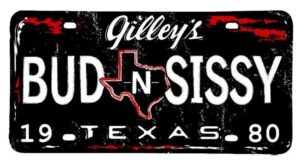
Bridwell, Dennis
One cannot sink much lower than Patrick Welsh aka Tim Kingsbury.
BK Smith
Agree!
Steve
I’m not sure why a pseudonym is being used for the girlfriend. Her name can be easily found doing an internet search. Her and her dad are just as big of creeps. When this all came down, they made Pat Welsh out like he was the victim. And she’s still with him. Strangely, Pat Welsh is back in contact with his original family although it’s unclear (but assumed) his sons want nothing to do with him. Peachy Welsh eventually remarried.
BK Smith
Hi Steve. It has been a few months since I wrote this, and I don’t remember specifically why I did not use her real name. However, I often do not use real names even when I would be justified to do so.
It’s just not worth my time to deal with them. It’s different when a criminal has been convicted and there is a clear record … that’s 100% proof that my statements are accurate. What’s put into one publication could be inaccurate and that would be all the source material I would have to support my remarks; and I could be wrong.
I’d rather be writing a new story than arguing with a lawyer about using someone’s name on my blog. Thanks for your comments and info on the people involved